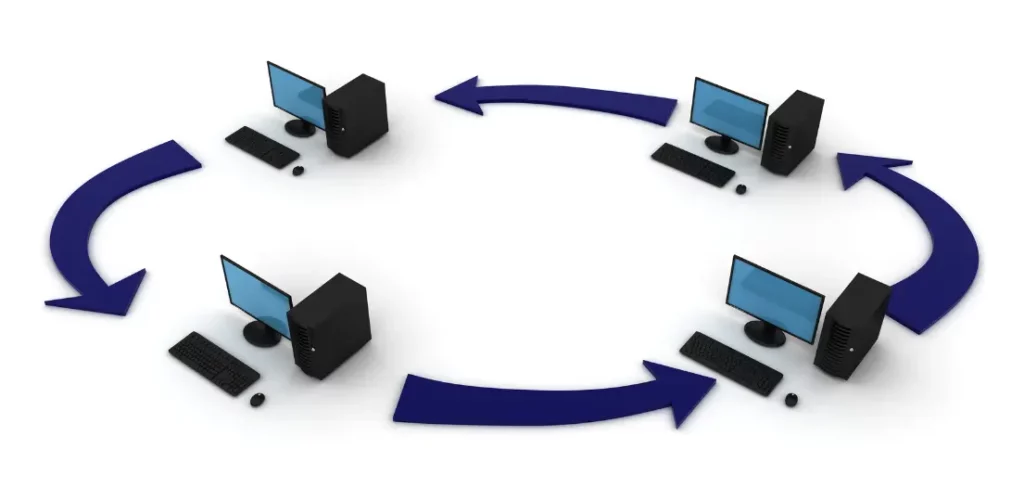“Data is a precious thing and will last longer than the systems themselves.”
Tim Berners-Lee
Customer Data Platforms (CDPs) have revolutionized the way businesses manage and leverage customer information. However, one persistent challenge is ensuring seamless data synchronization across multiple systems. This article examines how AI-enhanced CDPs can address synchronization issues, detailing the complexities involved, technological solutions, and broader implications for businesses.
The Challenges of Data Synchronization

Data synchronization involves ensuring that data is consistently updated and replicated across different systems and platforms. In the context of CDPs, this is crucial for maintaining accurate and up-to-date customer profiles. According to a study by IDC, 77% of businesses struggle with data synchronization, which affects their ability to provide real-time customer insights.
Several factors contribute to synchronization challenges. These include the use of disparate systems that are not designed to work together, data latency issues, and the lack of standardized data formats. These challenges can lead to inconsistencies, outdated information, and inefficiencies in data processing.
AI Solutions for Data Synchronization

Artificial Intelligence offers advanced tools to address data synchronization challenges in customer data platforms. One significant advancement is the use of AI for real-time data integration. AI algorithms can continuously monitor and update data across multiple systems, ensuring that changes made in one system are immediately reflected in others. This real-time synchronization capability helps maintain data consistency and accuracy.
Machine learning models play a critical role in identifying and resolving synchronization issues. These models can analyze data flows and detect patterns that indicate synchronization problems, such as data conflicts or mismatched formats. By continuously learning from data interactions, AI systems can optimize synchronization processes, ensuring seamless data integration.
For instance, AI-driven synchronization tools can aggregate data from various sources, such as CRM systems, e-commerce platforms, and social media channels, into a single, unified dataset. This unified approach enables businesses to maintain comprehensive and accurate customer profiles. According to McKinsey, companies that utilize AI for data synchronization report a 30% improvement in data accuracy and processing efficiency.
Natural Language Processing (NLP) further enhances synchronization by analyzing unstructured data from customer interactions, such as emails, chat logs, and social media posts. NLP can extract relevant information and convert it into structured data, ensuring that all customer interactions are accurately captured and synchronized across systems.
Practical Implementations and Business Benefits

Several advanced customer data platforms leverage AI to optimize data synchronization. For example, Oracle’s Customer Data Management platform uses AI-driven real-time data integration techniques to ensure that customer data is consistently updated across all systems. The platform’s machine learning algorithms continuously monitor data flows and resolve synchronization issues, providing businesses with accurate and up-to-date customer insights.
Salesforce’s Customer 360 platform also employs AI to enhance data synchronization. Salesforce uses AI algorithms to analyze data interactions and optimize synchronization processes, ensuring that customer data is accurately replicated across different systems. This real-time synchronization capability helps businesses maintain comprehensive and reliable customer profiles, improving decision-making and customer engagement.
Addressing Synchronization Challenges

While AI-driven CDPs offer significant benefits for data synchronization, several challenges remain. One primary concern is the integration of AI synchronization tools with existing data systems. Businesses must ensure that their AI-driven synchronization solutions are compatible with their current infrastructure and can be seamlessly integrated without disrupting operations. According to a report by Deloitte, 50% of businesses face challenges in integrating AI synchronization tools with their existing systems.
Data privacy is another critical consideration. As businesses synchronize data across multiple systems, they must ensure compliance with data privacy regulations such as GDPR and CCPA. AI-driven CDPs must incorporate robust data protection measures to safeguard customer information and maintain trust.
The cost of deploying advanced AI technologies for data synchronization can also be a barrier for some businesses. High-quality AI synchronization systems that provide real-time data integration and optimization capabilities can be expensive. However, the long-term benefits of improved data accuracy, processing efficiency, and customer insights often justify the initial investment.
Conclusion

AI-enhanced customer data platforms represent a significant advancement in addressing the complexities of data synchronization. By leveraging technologies such as AI-driven real-time data integration, machine learning models, and natural language processing, businesses can ensure seamless data synchronization across multiple systems. These systems offer unprecedented levels of data consistency and accuracy, ensuring that customer data platforms provide a reliable foundation for business operations.
As digital transformation continues to accelerate, investing in AI-driven solutions for data synchronization will become increasingly important for businesses seeking to enhance their data management capabilities. Addressing challenges such as integration, data privacy, and cost will be crucial to fully realizing the potential of AI in customer data platforms. Ultimately, AI represents a transformative force in the realm of data synchronization, offering innovative solutions that enhance data accuracy, processing efficiency, and business outcomes.
For further insights into AI and data synchronization in customer data platforms, refer to IDC’s study on data synchronization challenges and McKinsey’s report on AI-driven data synchronization.


